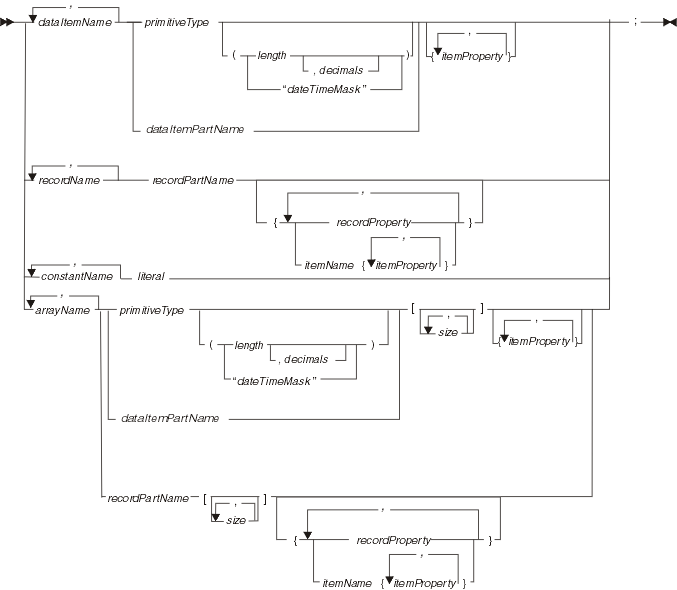Function variables
The syntax diagram for each variable in a function is as follows:

- dataItemName, recordName
- Specifies the name of a local data item or record. For details on usage in the function, see References to variables and constants. For other rules, see Naming conventions.
- dataItemPartName, recordPartName
- A dataItem or record part that is visible to the function and that acts as a typedef for the variable.
- primitiveType
- The primitive type, if no typedef is in use.
- length
- The variable's length, which is an integer that represents the maximum number of characters or digits in the memory area referenced by variableName.
- decimals
- For some numeric types, you may specify decimals, you may specify decimals, which is an integer that represents the number of places after the decimal point. The maximum number of decimal positions is the smaller of two numbers: 18 or the number of digits declared as length. The decimal point is not stored with the data.
- "dateTimeMask"
- For items of type INTERVAL or TIMESTAMP, you may specify "dateTimeMask", which assigns a meaning (such as "year digit") to a given position in the item value. The mask is not stored with the data.
- constantName literal
- Identifies a constant and the literal that is held by the constant. The constant is local to the function.
- arrayName
- Name of a dynamic or static array of records or data items. If you use this option, the other symbols to the right (dataItemPartName, primitiveType, and so on) refer to each element of the array.
- size
- Number of elements in a static array.
Related concepts
Function part
Parts
References to parts
References to variables and constants
Syntax diagram
Typedef
Related tasks
Function part in EGL source format
Related reference
Arrays
INTERVAL
Naming conventions
TIMESTAMP